Overcoming Supplier Discovery Challenges: A Comprehensive Guide


Key Takeaways:
Project delays, budget overruns, reputational damage, and legal trouble—just from picking the wrong supplier?
It happens more often than you’d think.
But the blame doesn’t always fall solely on procurement.
Supplier discovery is a complex process, often hindered by slow workflows, inaccurate data, and limited visibility.
So, should you just give up on improving your sourcing process?
Absolutely not.
In this article, we’ll explore the most common supplier discovery challenges and share practical strategies to overcome them.
By the end, you’ll have the tools and insights needed to streamline your processes and secure reliable, high-quality suppliers for your organization.
First, let’s explore some obstacles procurement professionals often have to deal with.
Manual supplier discovery eats up a lot of valuable time, forcing teams to sift through and compare mountains of data scattered across many emails, paper records, and systems.
In today’s fast-paced world, where decisions need to be made quickly, this type of inefficiency is a major setback.
Yet it’s all too common in procurement.
According to the 2024 Inspectorio survey, 36% of procurement professionals consider inefficient processes their biggest challenge in supply chain management.
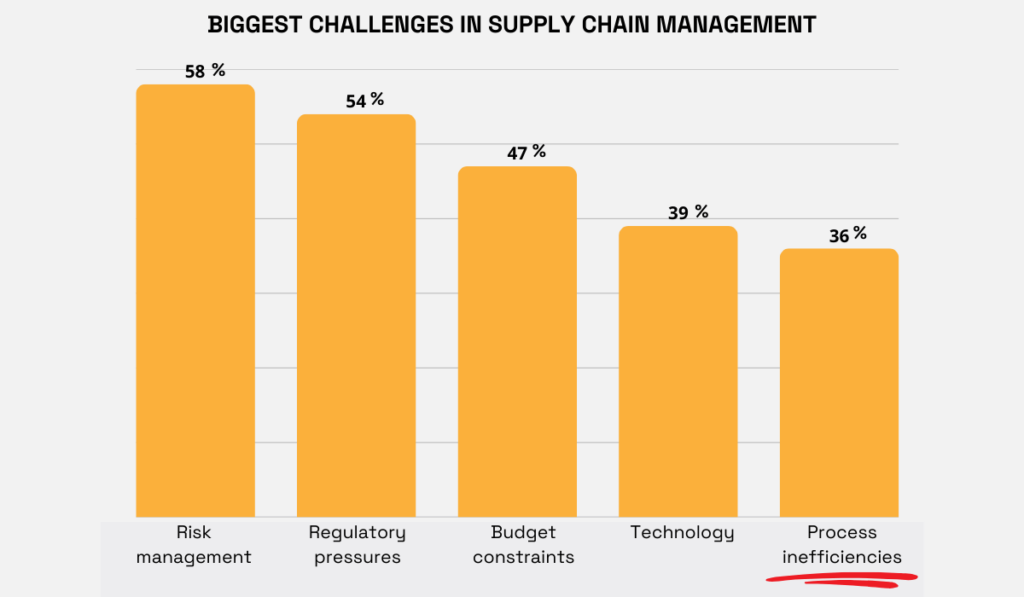
Illustration: Veridion / Data: Inspectorio
And the aftermath of being so slow is just too disastrous to ignore.
The 2022 TealBook research also paints a concerning picture, revealing that sourcing and procurement executives take nearly five weeks to identify a supplier.
And the consequences?
Over half (56%) report project delays, 50% exceed their budgets, and 43% fail to meet demand.
What’s more, 41% have lost out on business, and 40% have suffered reputational damage—all because it took them too long to find a supplier.
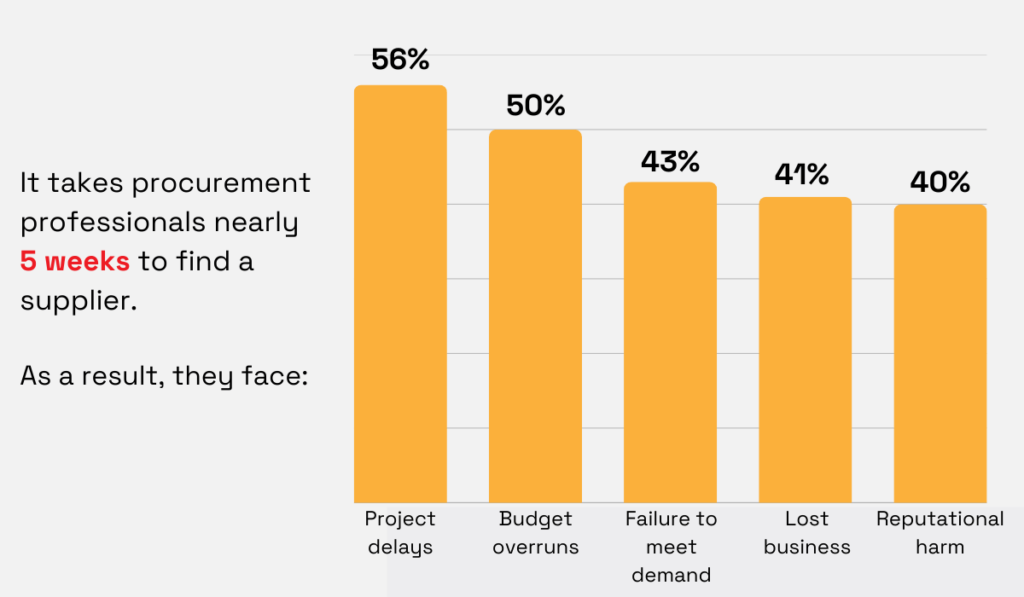
Illustration: Veridion / Data: TealBook
Unfortunately, the problems don’t end there.
As Ian Nethercot, Supply Chain Director at IT procurement company Probrand, points out, inefficiency also prevents teams from making strategic decisions:
“Bogged down by unnecessary admin, a lack of access to live data is leaving buyers struggling to buy at the best times and gain value from every purchase. As a result, they also have less time to spend building strategic relationships with the suppliers that can help them better meet the needs of their organization.”
Essentially, slow, outdated processes don’t just cost you time.
They create a cycle of missed opportunities, increased risks, and diminished success.
In addition to slowing you down, manual supplier discovery also produces data that’s incomplete, outdated, or outright inaccurate.
And how can you expect to make smart, strategic decisions when you’re working with unreliable information?
Unfortunately, you can’t.
According to another TealBook survey, 93% of procurement and supply chain leaders report having experienced negative impacts due to misinformation about their vendors.
Even worse, nearly half (47%) encounter such issues regularly.
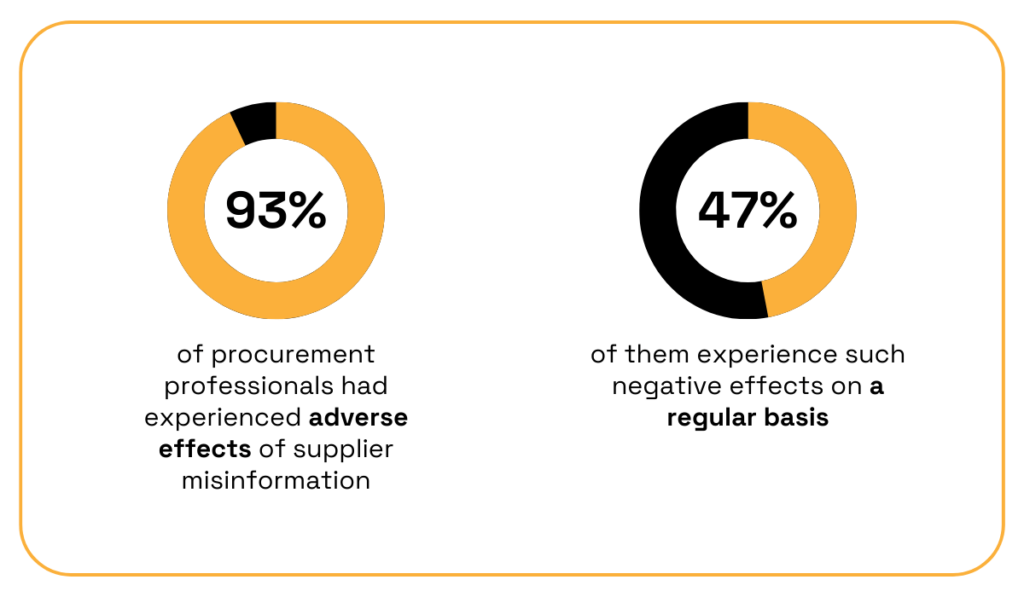
Illustration: Veridion / Data: TealBook
It’s easy to see why. Misinformation is the greatest barrier to transparency.
When you don’t have full visibility into your suppliers, you don’t really know who you’re doing business with.
Ingmar Mester, Director of Supplier Management and Sustainability at Hapag-Lloyd AG, a German international shipping and container transportation company, agrees:
“In order to find the right partners, you need to have transparency. It’s no longer enough just to know the financial rating of the supplier. You need to know a lot more about their operational capabilities, about their plans, and you have to deal with them very differently.”
If you don’t have this information—or if you can’t trust it—you, essentially, stay in the dark, exposing your company to all sorts of issues.
Just look at Shein.
In 2021 (and again in 2024), the fast-fashion giant found itself at the center of a controversy when the Swiss advocacy group Public Eye exposed excessive work hours at its supplier in China.
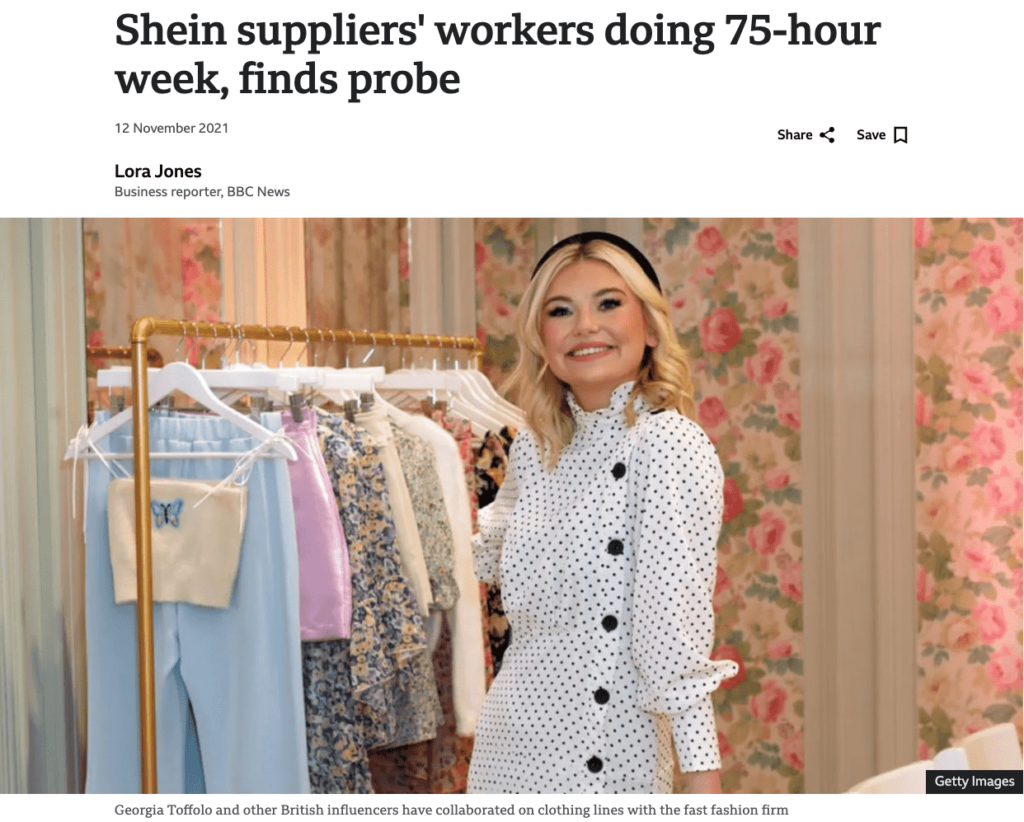
Source: BBC
Shein replied at the time:
“Upon learning of the report, we immediately requested a copy and when we receive and review the report, we will initiate an investigation.”
This suggests they weren’t aware of their supplier’s business practices from the get-go.
That’s a problem because when you partner up with non-compliant companies, you don’t just risk reputational damage but also legal problems and unnecessary costs.
You simply need reliable supplier data to be able to choose strong partners and avoid incidents like these, no two ways about it.
Today, many companies rely on international procurement to cut costs, maintain a steady supply of materials, and build more efficient supply chains overall.
But while global sourcing offers many perks, it also comes with a hidden challenge—cultural differences.
Whether it’s varying business etiquettes, communication styles, or even compliance standards, these gaps can quickly turn promising partnerships into frustrating obstacles.
Sjoerd Goedhart, owner of Goedhart Interim Management & Consultancy, agrees, emphasizing there are no efficient relationships without recognizing cultural differences:
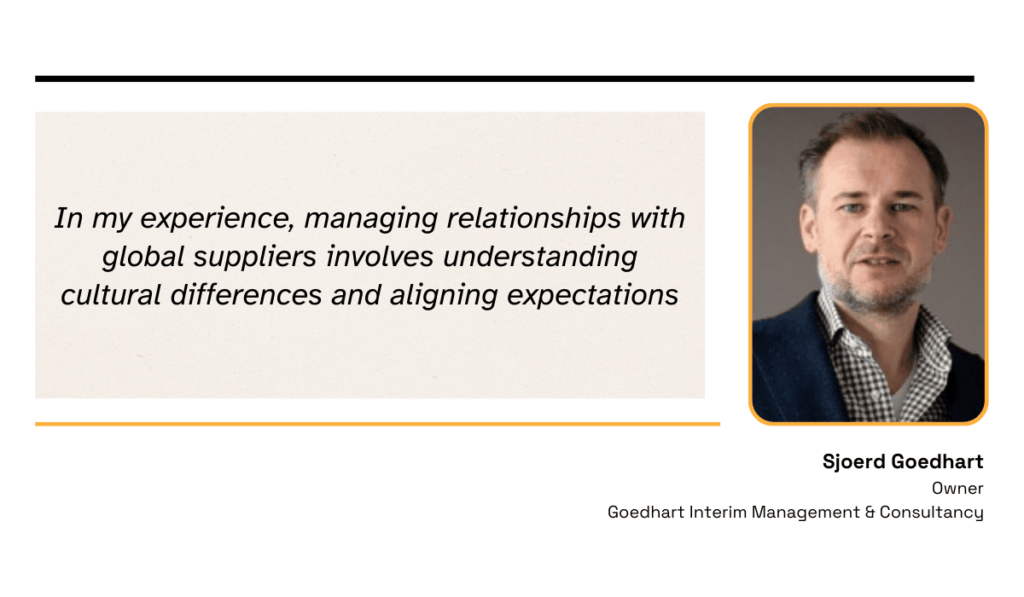
Illustration: Veridion / Quote: Procurement Tactics
According to Goedhart, buyers need to adapt to a supplier’s way of doing business. Otherwise, they might be in for an unpleasant surprise.
For instance, negotiation styles vary widely across regions, which can lead to miscommunication, misalignment, or frustration.
Language barriers can also pose significant problems, particularly when discussing complex technical issues.
Simply put, cultural barriers undermine the most critical elements of a successful supplier-buyer relationship: clear communication and mutual understanding.
The 2022 Deloitte survey further backs this up.
According to the surveyed procurement professionals, some of the most valued qualities in service providers include transparency, trustworthiness, and regular communication.
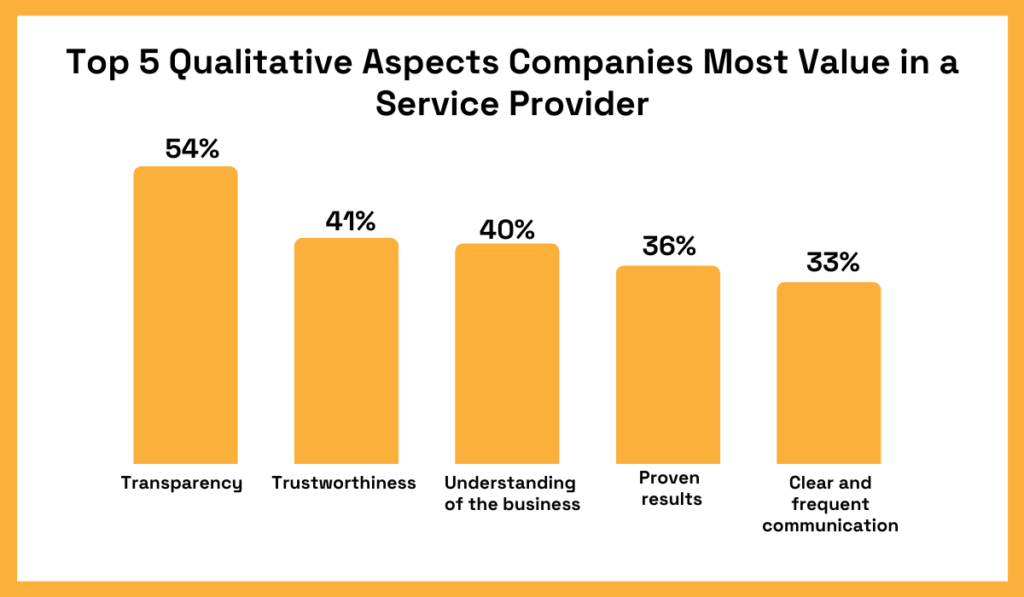
Illustration: Veridion / Data: Deloitte
However, in global procurement, none of these can be achieved without acknowledging and addressing cultural differences first.
And ultimately, this can make it practically impossible to build strong, lasting partnerships with foreign suppliers.
As sustainability becomes a top priority for investors, regulators, and consumers alike, vendors’ ESG performance needs to be tracked more closely than ever.
However, this adds another layer of complexity to the supplier discovery, especially because some suppliers are unwilling to share this kind of information with buyers.
The 2025 Sana survey confirms that ESG isn’t just a passing trend anymore.
It found that 92% of B2B buyers conduct research to ensure products meet sustainability requirements.
When relevant information isn’t readily available, 46% of them will call a representative, while 27% will switch to another supplier.
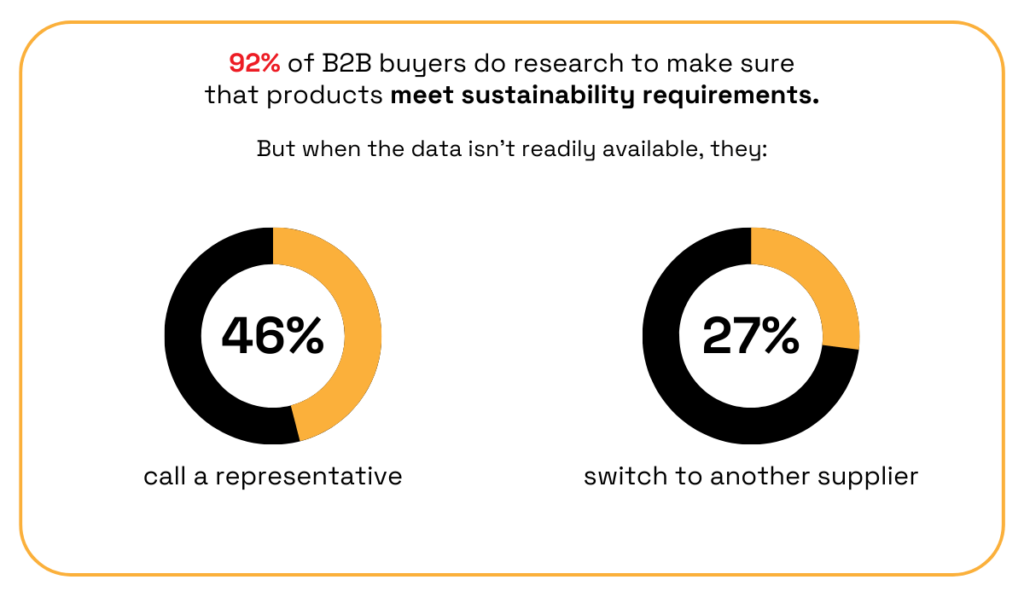
Illustration: Veridion / Data: Sana Commerce
Either way, verifying sustainability and corporate social responsibility adds time and effort to an already time-consuming discovery process.
Even further adding to this challenge is the difficulty of balancing your supply chain needs with ESG targets.
Ding Dingxiaozi, Product and Analytics Director at LRQA, a leading global assurance partner, elaborates:
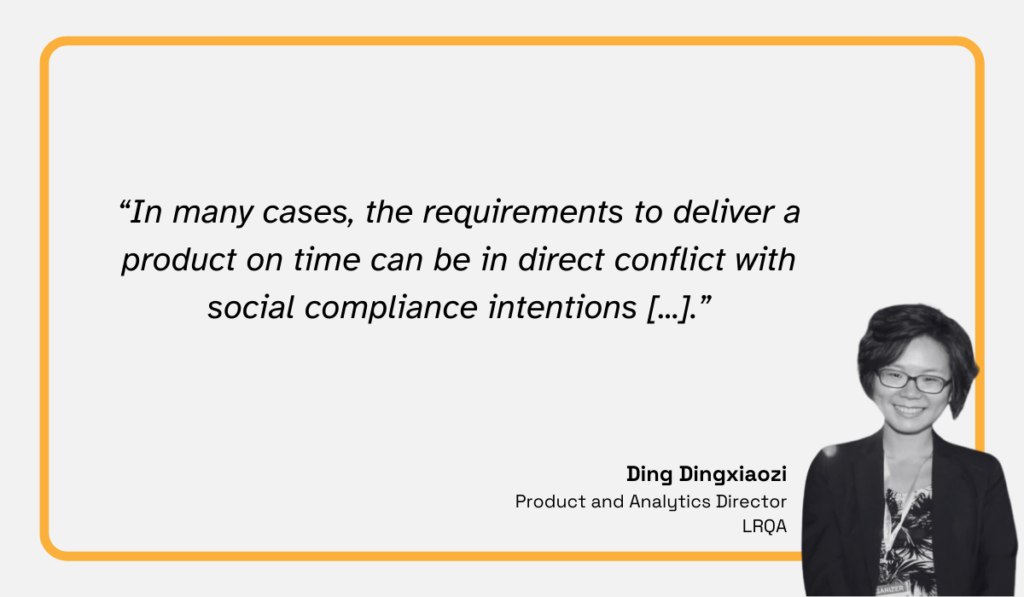
Illustration: Veridion / Quote: Strategic Risk
In other words, finding a partner who can deliver exactly what you need, when you need it, at a competitive price, while fully complying with ESG standards is often a very difficult task.
Yet failing to do so can lead to serious consequences.
Take Boohoo, for example.
In 2020, this British fast-fashion retailer lost its shareholders’ trust after it was revealed that workers at its supplier’s factory were being paid far below the UK’s minimum wage.

Source: The Guardian
Boohoo condemned the conditions as “totally unacceptable” and vowed to cut ties with all the partners who don’t comply with its ESG standards.
Nevertheless, the damage was already done.
Following the scandal, Boohoo’s shares plummeted 23% to 297p, wiping £1.1 billion off its valuation on the AIM market in London.
This just goes to show how much pressure procurement professionals face today.
Not only are they expected to cut costs and ensure operational continuity, but they must also protect companies against risks tied to suppliers’ ESG performance.
And they must do it all while battling inefficient processes and poor visibility.
Procurement professionals certainly have a lot on their plate.
However, not all is lost—there are several strategies to overcome supplier discovery challenges.
Let’s explore some of them.
Industry conferences and trade shows serve as a great opportunity to meet suppliers face-to-face, evaluate their products, and compare your options in real-time.
As such, these events help gather fresh, reliable insights into potential partners while fostering strong relationships from the get-go.
And with countless trade shows tailored to different industries, there’s truly something for everyone.
For example, MAGIC Las Vegas is a major fashion marketplace that connects top retailers and manufacturers while showcasing upcoming designs across apparel, home, beauty, and footwear categories.
Edwina Kulego, Vice President of PROJECT & International, highlights its mission:
“Connecting retailers to global influencers and innovative providers, as well as the producers fueling cross-market trends, continues to set PROJECT and SOURCING at MAGIC apart as the destination with the fullest, most expansive offering to wholesale buyers.”
Another great example is CES, an annual trade show organized by the Consumer Technology Association (CTA), where companies present cutting-edge consumer electronics:

Source: TSNN
Many big players attend this event to discover new suppliers.
At the 2024 CES, for instance, Microsoft expressed interest in AI Guided, a Hong Kong startup developing a haptic-feedback belt for obstacle detection, assisting visually impaired individuals.
Plus, Invisible & Innovation Technology (Invisible Tech), which integrates speakers into furniture, attracted Best Buy’s attention.
In fact, a representative from the retailer noted that they had never seen a product like Invisible Tech’s cabinet with an embedded speaker, according to co-founder Patrick Lee:
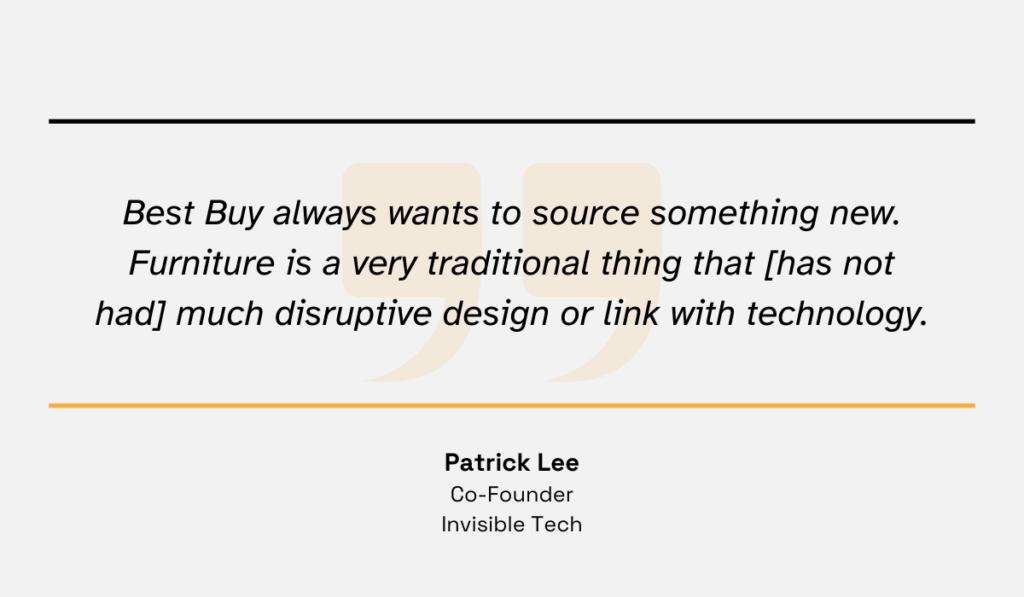
Illustration: Veridion / Quote: Yahoo!Finance
Indeed, trade shows like these are goldmines for networking and discovering vendors and products you might never find otherwise.
However, they can be quite time-consuming.
So, if speed is your priority, conferences might not be the most efficient route.
But if you’re serious about thoroughly vetting suppliers as well as checking their product quality and manufacturing processes, attending these events is a strategy that can pay off in a big way.
Hiring third-party sourcing agents can be highly beneficial, as they have extensive networks and can quickly connect you with top-tier suppliers that fit your company’s needs perfectly.
This saves you countless hours and headaches, especially if you typically rely on manual discovery processes.
Rogelio Gutierrez, Social Media Manager at JMZ Marketing Inc., a sales & marketing service provider, agrees:
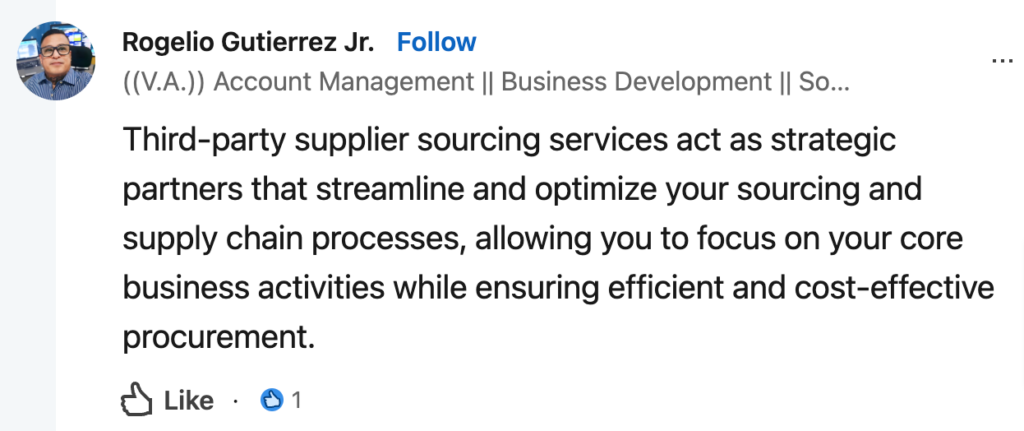
Source: LinkedIn
These services are particularly valuable if you’re venturing into global procurement.
Instead of having to find a supplier that’s across the world yourself, a sourcing agent takes care of it all for you.
They help secure the right factory, assist in negotiations, resolve issues, and navigate cultural barriers on your behalf.
Of course, this convenience comes at a price.
Hiring a sourcing agent or consultant can get quite expensive, especially for small businesses.
Supplyia, a global sourcing and supply chain management company, outlines the most common pricing models:
| Commission-Based Fees | Most sourcing agents charge a percentage of the total order value, typically ranging from 5% to 10% |
| Flat Fees | For small projects or one-time sourcing tasks, some agents charge a fixed fee, usually between $500 and $2,000, depending on the project’s complexity |
| Monthly Retainers | For long-term engagements, a sourcing agent may charge a monthly fee, generally between $1,000 and $5,000, depending on the scope of services |
| Per-Service Fees | Some agents offer à la carte services, such as factory audits, quality control inspections, or sample procurement, with fees ranging from $200 to $1,000 per service |
That’s why, before committing to this strategy, it’s best to weigh the costs against the potential benefits to ensure a financially sound decision.
Plus, when selecting a sourcing agent, be sure to clarify the fee structure upfront and ensure transparency regarding any hidden commissions or additional costs.
The last strategy for overcoming supplier discovery issues on our list is also the most effective one—leveraging supplier discovery platforms.
AI-powered solutions like our Veridion completely transform supplier sourcing, minimizing all the challenges we’ve discussed.
Let’s see how.
First, Veridion is significantly more efficient than manual discovery processes.
Don’t believe us?
Take a look at the comparison below:
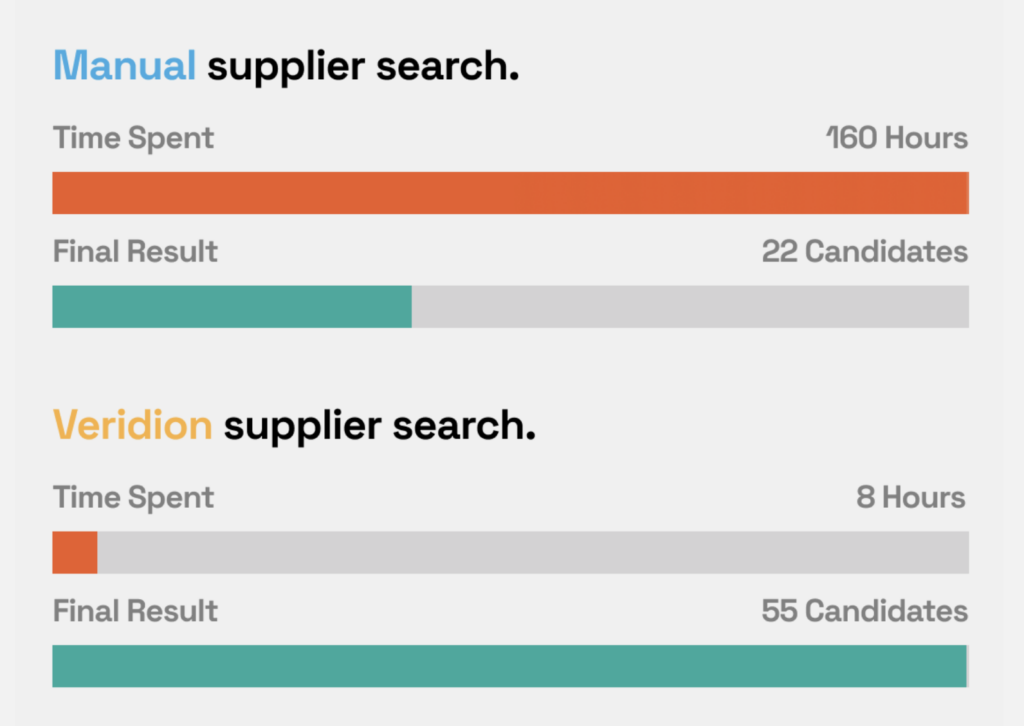
Source: Veridion
As you can see, Veridion delivers better results—and much faster—all with almost no effort on your part.
Using our latest tool, Scout, you simply input your requirements in natural language.
Then, Scout taps into Veridion’s global database of millions of suppliers to bring you precisely what you need.
Learn more about Scout here:
Source: Veridion on YouTube
Second, Veridion ensures complete data reliability.
By continuously scraping the internet and verifying data using advanced AI technology, Veridion provides only the most accurate, complete, and up-to-date supplier information.
That way, you can make well-informed decisions and select business partners with confidence.
Third, our extensive database includes suppliers, products, and services from all over the world.
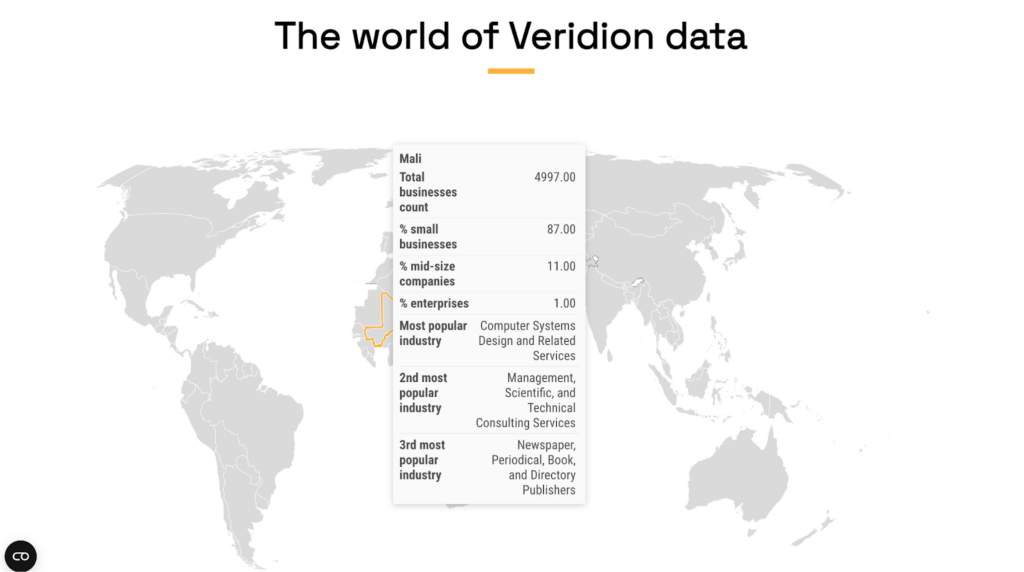
Source: Veridion
This enables you to assess capabilities and potential risks before engaging with suppliers, preventing miscommunication and misalignment regardless of location or cultural differences.
For example, you can monitor vendors’ financial health to mitigate risks from financial disruptions.
Or, you could assess operational stability by examining factors like worker safety and labor law compliance.
Finally, Veridion significantly simplifies ESG performance tracking.
Our platform covers a broad range of ESG risk factors, from atmospheric contamination and carbon footprint to illegal deforestation, water usage, and labor standards.
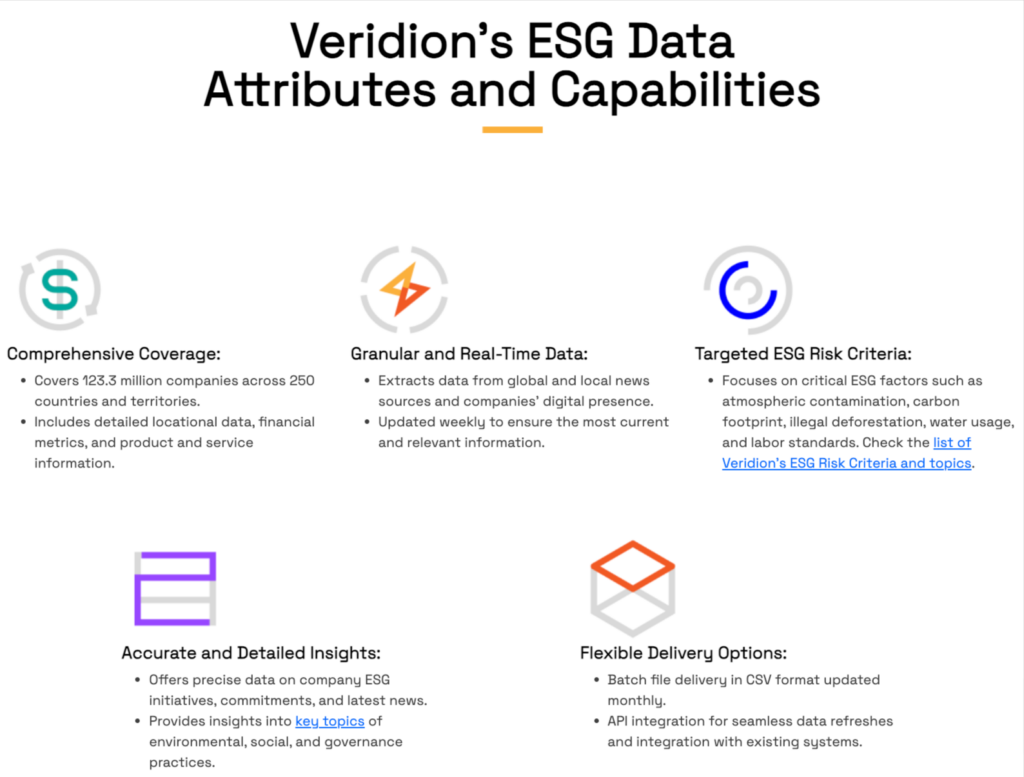
Source: Veridion
Besides, it also tracks ESG news in real-time, keeping you informed about company activities such as net-zero targets, certifications, and any negative press or regulatory issues.
In short, with a dedicated supplier discovery platform, finding the right suppliers is easier, faster, and more effective than ever before.
Instead of wasting your precious time on various inefficiencies and obstacles, you can finally focus on more strategic, value-driven work.
Which is what procurement should be all about anyway.
Despite the many challenges procurement professionals face, there’s still a silver lining.
New technologies for supplier discovery, communication, and management are constantly emerging, and the importance of reliable data is being increasingly recognized.
As a result, procurement is becoming better, faster, and more data-driven by the day.
So, if you’re struggling with some of these challenges, don’t despair.
With the right strategy and tools, you can easily tackle any obstacle, streamline your process, and connect with the perfect suppliers anywhere in the world.